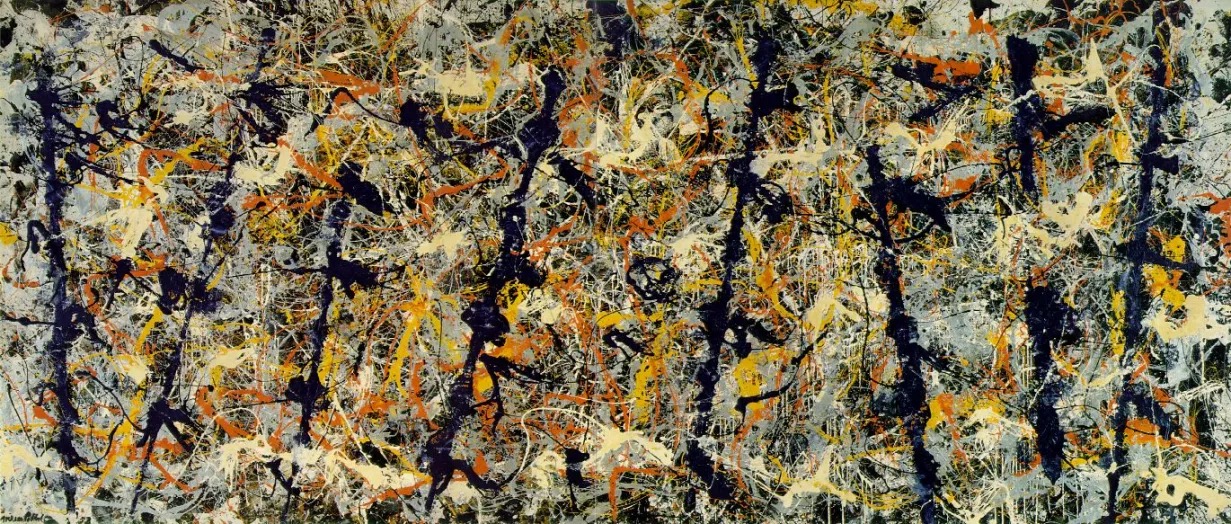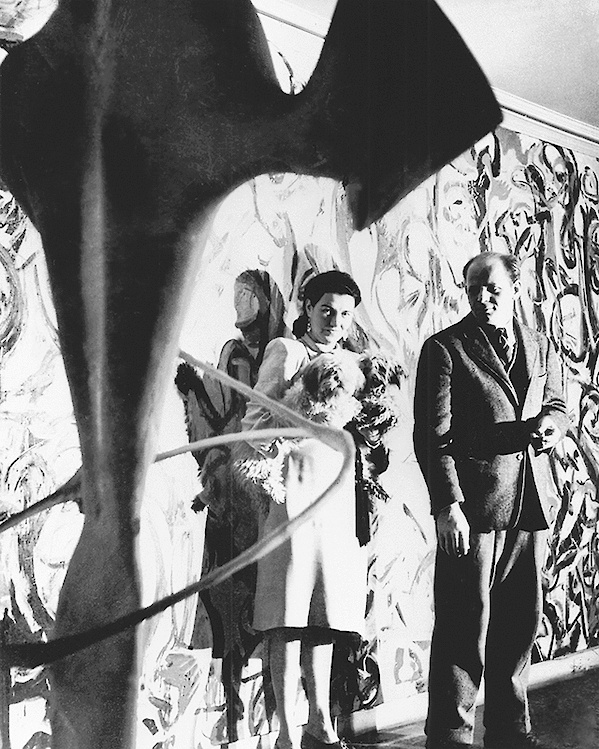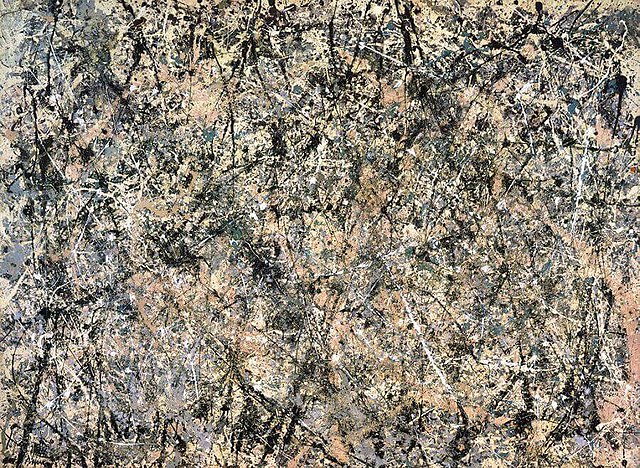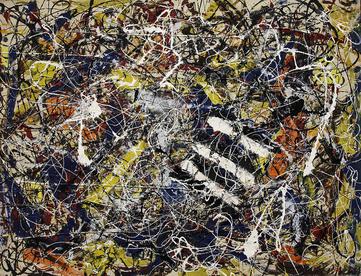Willem de Kooning said: "From time to time, a painter must destroy the painting. Cézanne did it. Picasso did it. Jackson Pollock did it.". It is a certainty, Jackson Pollock (1912-1956) had a great influence on the evolution of art.
Let's discover 6 things to know about the father of the Abstract Expressionism, an artist as prolific as tormented who was nicknamed "Jack the Dripper".

1 - He was never really rich
Despite a worldwide fame during his lifetime and a staggering price today, the American painter had money problems during most of his life.

Jackson Pollock in his studio
As proof, during the Great Depression of the 1930's, he sometimes discreetly stole basic necessities such as gasoline or food.
2 - The Federal Art Project allowed him to find financial stability
The Federal Art Project of the WPA was launched in the United States to support artists in the face of this economic crisis.

Blue Poles, Jackson Pollock, 1952
In 1935, Jackson Pollock benefited from this aid program until 1942. During this period, his artistic reflection focused almost essentially on the notion of format in painting.
3 - Peggy Guggenheim led Jackson Pollock to success
In 1943, Peggy Guggenheim gave him the opportunity to exhibit alongside 35 other artists at Art of this Century, a museum-gallery founded in October 1942 by Peggy Guggenheim in New York.

Peggy Guggenheim and Jackson Pollock in 1946 in New York City in front of the work Mural (1943) - Peggy Guggenheim Collection ©
The artist was immediately noticed by Marcel Duchamp, who was one of the jury members of the exhibition and who gave a very favorable opinion of Jackson Pollock's artistic work.
After the exhibition, Jackson Pollock signed a contract with the great patron and collector, who then offered him 150 dollars a month for a few years and quickly devoted his first personal exhibition to him.
4 - He is the master of Action Painting
From the 1950s onwards, Action Painting designated a trend within Abstract Expressionism, in which the physical involvement and gestures of the artists took a central place in the creative process. More generally, this approach was initially described by art critics as an unconventional process of pictorial creation.

Number 1 (Lavender Mist), Jackson Pollock, 1950
Some of his contemporaries experimented this approach: Mark Rothko, Willem de Kooning or Franz Kline.

Jackson Pollock in his studio in 1951
Pollock thus naturally became the leader of Action Painting thanks to his use of the Dripping and Pouring techniques.
5 - He died in a car accident
Throughout his life, Jackson Pollock had a visceral attraction to alcoholic beverages. As early as age 15, while attending Riverside High School, he was already beginning to drink alcohol to escape.
In the 1930s, while attending the Art Student League in New York with Thomas Hart Benton, his brother Charles, also a painter, convinced him to seek treatment by going to rehab.
Under the influence of alcohol, Jackson Pollock killed himself in a car accident on August 11, 1956 in the small town of Springs, New York.
6 - Jackson Pollock's value on the art market
To say that Jackson Pollock is a popular figure on the international art market is an understatement, as he has been one of the most highly valued artists in the world for decades, and this trend does not seem to be going away any time soon.

Number 17A, Jackson Pollock, 1948
His painting Number 17A is to date the fifth most expensive artwork of all time, it was purchased in 2015 in a private sale for $200 million.
The buyer is none other than American entrepreneur Kenneth C. Griffin, who by the way also owns the most expensive home in the United States.




